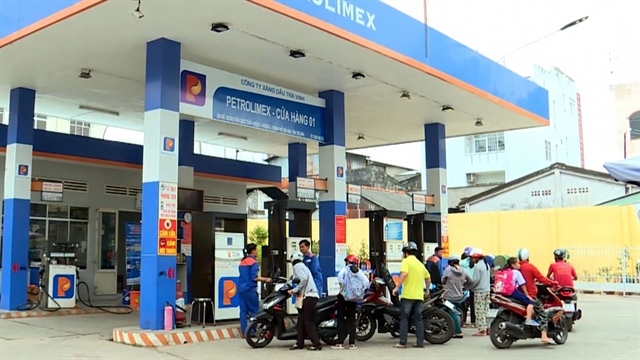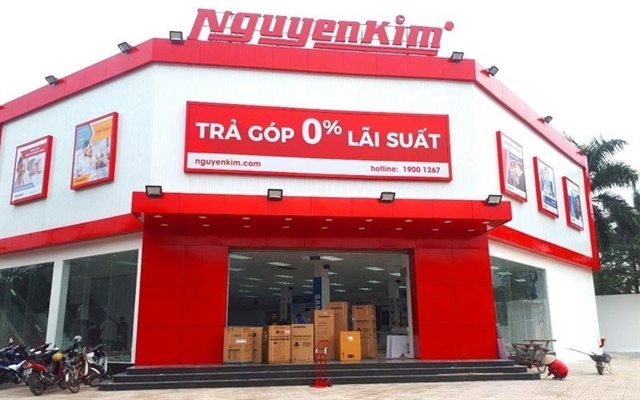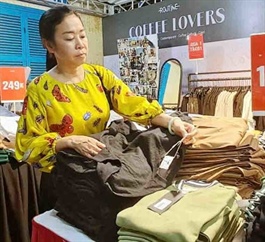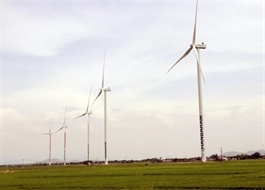Textile, footwear exporters have full orders for 2024
Textile, footwear exporters have full orders for 2024
In contrast to a lack of export orders at this time last year, textile and footwear enterprises have so far received full orders until the end of this year – and some enterprises even have orders for the first quarter of next year.
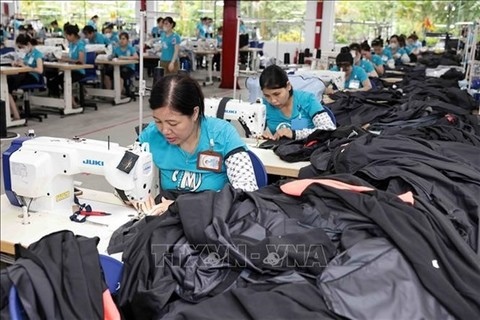
Workers at Maxport Garment Company in the northern province of Nam Định produce garment for exports. — VNA/VNS Photo |
Bạch Hồng Long, deputy general director of the No. 10 Garment Corporation, said his corporation is urgently completing orders for 2024. The corporation also has full orders until the end of February 2025.
Currently, the corporation is negotiating new orders through the first quarter of 2025, and about 70 per cent of orders for the first quarter of 2025 have been finalised. Due in part to this positive outlook, the corporation's revenue in 2024 is expected to increase by 10-20 per cent compared to last year.
Long also forecast that textile orders in Việt Nam will increase sharply in 2025. However, he noted, the increase is not due to rising demand in global markets, but due to a shift from one country to another.
Similarly, Dony Garment Company Limited said that Dony’s orders are fully booked until the end of 2024 and it is negotiating new orders through March 2025.
Phạm Văn Việt, general director of the Việt Thắng Jean Company, said his company received orders transferred from other countries, especially from Bangladesh, with cheap prices. However, high-quality orders exported to European markets did not increase because the market has not recovered well.
Explaining the increase in orders, Trương Văn Cẩm, deputy chairman of the Vietnam Textile and Apparel Association, said the increase in orders was mainly due to a shift from other countries to Việt Nam, not due to increasing market demand.
According to Cẩm, textiles and garments are among the key industrial production sectors that have many advantages in export activities. He explained after the US Federal Reserve (Fed) lowered interest rates by 0.5 percentge points in early September and inflation in the US and EU decreased, consumption was stimulated in the two major markets for Việt Nam's textile and garment exports. He said he expects orders to further improve in the near future.
Natural disasters, political instability and policy inadequacies in some garment exporting countries continue to result in opportunities for Vietnamese textile and garment enterprises to gain orders that have shifted from those countries.
Seasonal factors, including festivals, and companies' discount and consumer stimulus policies will also bring a more bustling year-end shopping season.
In addition, Cẩm said, freight prices continue to decrease, helping garment exporters save costs.
According to Cẩm, though the number of orders will rise when US consumer demand increases during the holiday shopping season, the export price will not go up. He forecast that demand and price will only really improve starting in 2025.
According to the Vietnam Textile and Apparel Association (VITAS), the total export turnover of the Vietnamese textile and garment industry in the first nine months of 2024 exceeded US$32.5 billion, up 9.2 per cent over the same period last year. The industry’s export target of $44 billion in 2024 is very feasible because the end of the year is a peak time for orders and production during Christmas and Lunar New Year.
The same trend is also seen in the footwear industry. Exports for the industry in the past nine months are estimated at $20 billion. If the current recovery rate of 10 per cent is maintained, the footwear industry's exports are expected to reach about $27 billion in 2024.
Phan Thị Thanh Xuân, deputy chairman and general secretary of the Vietnam Leather, Footwear and Handbag Association, said that orders are currently recovering. Many footwear enterprises have orders through the end of 2024, and some enterprises have orders until the first quarter of 2025.
Xuân said that the double-digit growth achieved is quite positive and the footwear industry is likely to reach its target of $27 billion in 2024.


